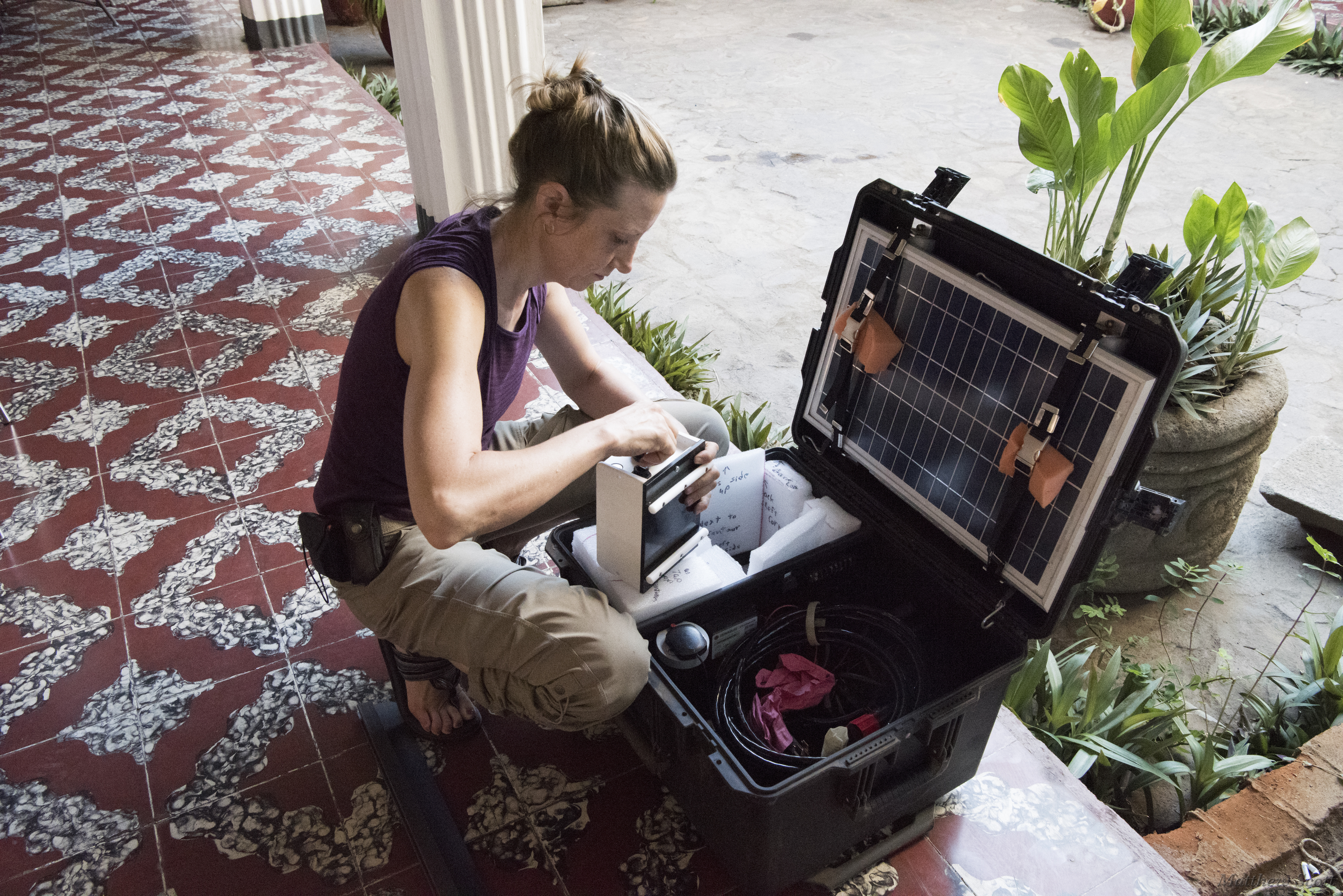A Window to the Deep Earth
Carnegie In The News
"The deep microbial realm reveals a biosphere that’s more extensive, resilient, varied, and strange than we had realized,’ said Robert Hazen, a mineralogist at the Carnegie Institution for Science and cofounder of Deep Carbon Observatory, a global project to study the deep biosphere."

Carnegie’s Lara Wagner received a multidisciplinary, multi-institutional National Science Foundation grant to study how deep tectonic structures affect the evolution of continental crust and the deep-Earth water cycle. Earth recycles its oceanic crust in subduction zones in which a tectonic plate dives beneath another plate into the Earth. Wagner and team will study regions of flat slab subduction in Colombia.
Flat slabs differ from normal subduction in that the plate descends to about 30 to 60 miles (~50 to 100 km) then flattens, travels horizontally, then descends again. This flat slab geometry insulates the overriding continental plate from the hot mantle, cooling the continent and slab, preventing normal subduction zone melting and volcanism. Water and dissolved minerals move out of the slab into the overriding plate, affecting continental composition and evolution. The researchers will investigate patterns of volcanism, mountain building, and basin evolution in relation to detailed slab geometry to determine how flat slabs control the fate of materials from Earth’s surface in Earth’s interior.

Wagner installs scores of seismometers to collect seismograms that “see” where Earth’s surface materials go and their effects. Seismic imaging is much like a CAT scan for the planet. In normal subduction zones, melting distorts seismic waves, obscuring detailed structures. Flat slabs are ideal to study Earth’s deepwater cycle because water can move without producing melt. The Colombian flat slab is particularly interesting because it used to be much larger than it is today. At about 3 million years, the southern part of the flat slab tore free and began to sink. Today there are two slab parts—the flat part and the part that resumed normal subduction geometry. Wagner’s team will use seismic imaging to compare the two to understand where the water is released and the effects of that water once the flat slab is removed.

Lara Wagner and team study the deep Earth in many locations around the world. Here she is examining a Carnegie-developed Quick Deploy Box (QDB) in Nicaragua before installing it in the field. Image courtesy Matthew Scott, Carnegie Institution for Science
These boxes (above) contain seismology instrumentation in small easy deployable boxes. Traditional broadband field installations contain a sensor vault, a field box for recording and power systems, and a solar panel mount, all of which are composed of bulky materials that make station installation more difficult and time consuming. The Carnegie QDB has everything, except battery and shovel, needed for installation. It is far less time consuming to deploy, and many more stations can be installed in the same amount of time.
Understanding where water is released deep within the Earth and what it does subsequently is a significant research focus at Carnegie. While water in pore spaces and cracks gets squeezed out early, water bound in the crystal structure of minerals within downgoing slabs may return water as deep as the Earth’s core-mantle boundary. Carnegie’s Mike Walter investigates the pressures and temperatures at which various water-laden minerals release water, while Carnegie’s Peter van Keken runs thermal modeling to determine the pressure/temperature conditions of slabs as they sink into the Earth.
